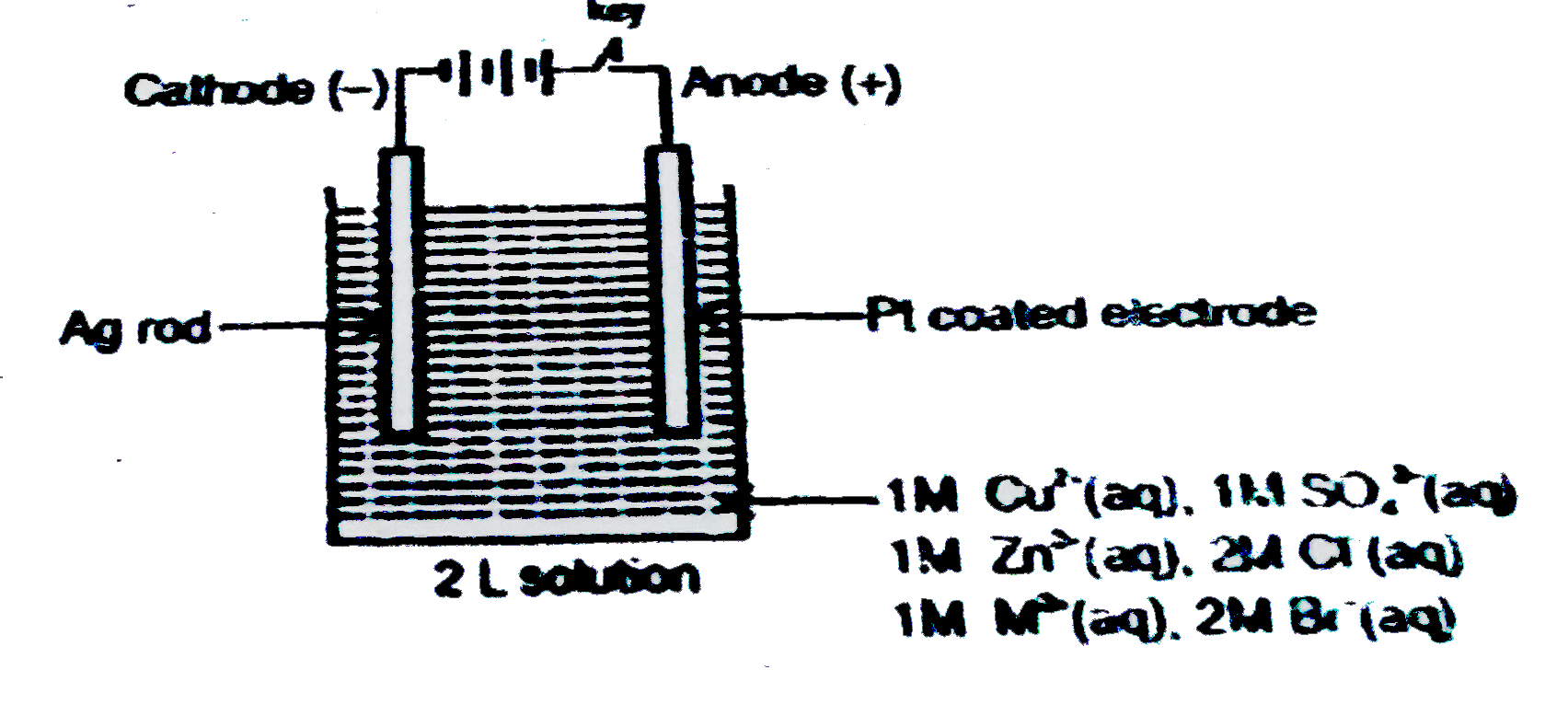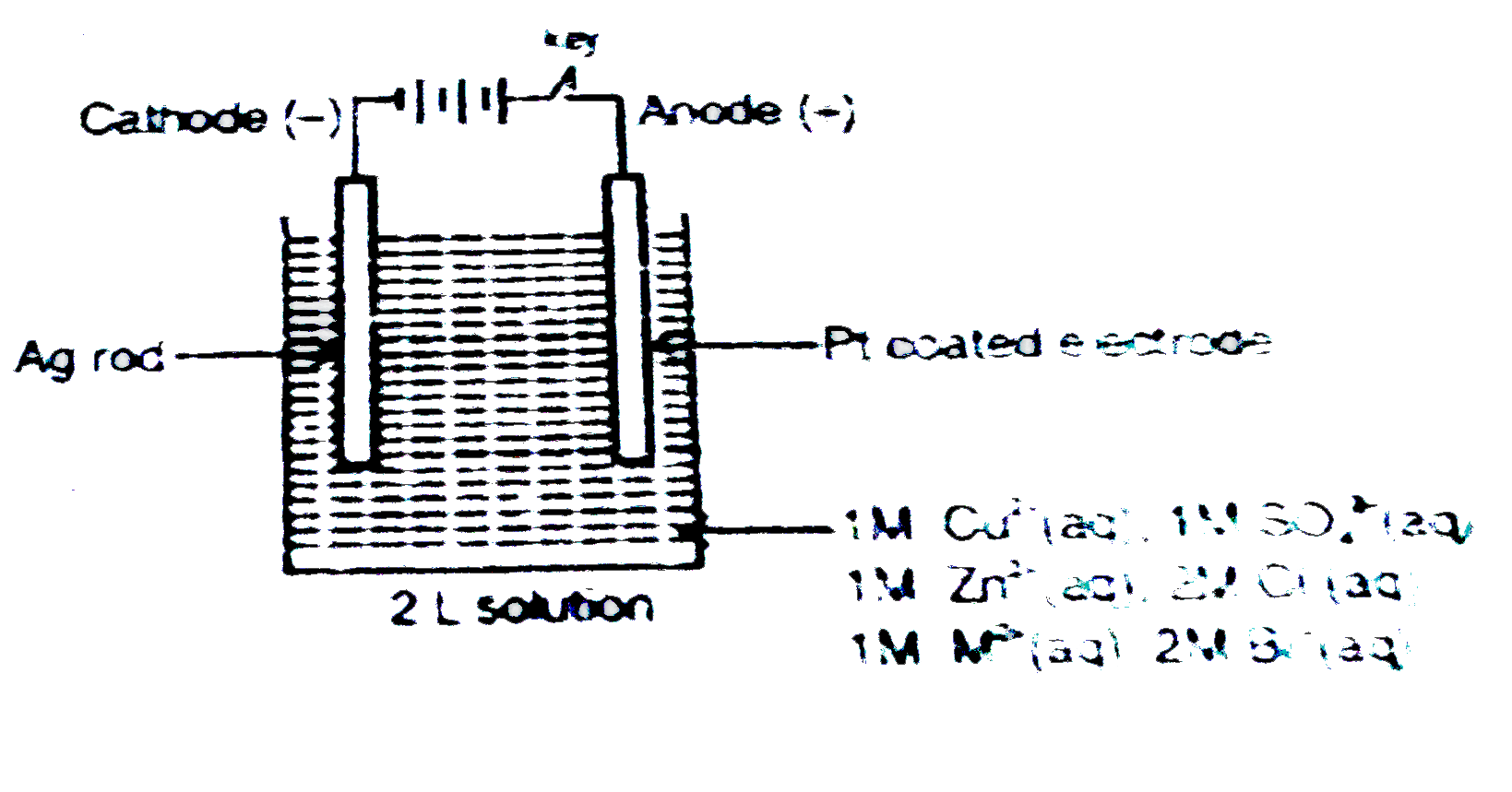What changes in the current in the range below saturation will take place, if the electrodes of an ionization chamber are brought closer? How will the saturation current change? Plot the current-voltage characteristics for some inter-electrode distance d, and for d2<d1. Assume the other parameters to remain constant.
The correct Answer is:Consider separately the phenomena that take place when the current is much less than the saturation current and when the current is saturated.
Away from the saturation region the current will increase, since the strength of the electric field increases as the plates are brought closer together. In conditions of saturation the current will decrease, since the effective volume of the ionization chamber is smaller. The current-voltage characteristics are shown in Fig.

Similar Questions
Is current density a vector or a scalar quantity ? Deduce the relation between current density and potential difference across a current carrying conductor of length l, area of cross-section A, and number density of free electrons n. How does the current density, in a conductor vary with (a) increases in potential gradient ? (b) increase in temperature? ( c) increase in length? (d) increase in area of cross-section? (Assume that the other factors remain constant in each case).
View SolutionA car has a fresh storage battery of emt 12V and internal resistance 5.0×10−2Ω. If the starter moter draws a current of 90A, what is the terminal voltage of the battery when the starter is on?
(b) After long use, the internal resistance of the storange battery increase to 500Ω. What maximum current can be drawn from the battery? Assume the emt of the battery to remain unchanged.
(c) If the discharged battery is changed by an external emf source, is the terminal voltage of the battery during changing greater of less than is emf 12V?
View Solution
Knowledge Check
The process of using an electric current to bring about chemical change is called electrolysis.Electrolysis is a processes of oxidation and reduction at the respective electrodes due to external current passed in the electrolyte.
The product obtained during electrolysis depends on following factors.
The nature of the electrolyte
The concentration of electrolyte
The nature of the electrode.
Consider the electrolysis of following cell containing aq. solution of CuSO4,ZnCl2 and MBr2 by using pure silver rod as a cathode and Pt electrode as anode.Assume that M2+ does not further oxidise and can not form complex with NH3 Assume no hydrolysis of any ion.
E0Cu2+/Cu=0.35V,E0M2+/M=−0.10V,E0Zn2+/Zn=−0.76V,E0H2O/H2=−0.828V,E0Ag+/Ag=0.80V,2.303RTF=0.06
After passing 20 amp current from battery for 28950 sec.the remaining conc. of ions in solution given in passage would be: (Assume current efficiency to be 100%)
 A[Cu2+]=0.5M,[M2+]=0.5M,[Zn2+]=0.1MB[Cu2+]≈0M,[M2+]=0.5M,[Zn2+]=0.5MC[Cu2+]=0.5M,[M2+]=0.5M,[Zn2+]=0.5MD[Cu2+]≈0M,[M2+]=0.5M,[Zn2+]=1M
A[Cu2+]=0.5M,[M2+]=0.5M,[Zn2+]=0.1MB[Cu2+]≈0M,[M2+]=0.5M,[Zn2+]=0.5MC[Cu2+]=0.5M,[M2+]=0.5M,[Zn2+]=0.5MD[Cu2+]≈0M,[M2+]=0.5M,[Zn2+]=1MThe process of using an electric current to bring about chemical change is called electrolysis.Electrolysis is a processes of oxidation and reduction at the respective electrodes due to external current passed in the electrolyte.
The product obtained during electrolysis depends on following factors.
The nature of the electrolyte
The concentration of electrolyte
The nature of the electrode.
Consider the electrolysis of following cell containing aq. solution of CuSO4,ZnCl2 and MBr2 by using pure silver rod as a cathode and Pt electrode as anode.Assume that M2+ does not further oxidise and can not form complex with NH3 Assume no hydrolysis of any ion.
E0Cu2+/Cu=0.35V,E0M2+/M=−0.10V,E0Zn2+/Zn=−0.76V,E0H2O/H2=−0.828V,E0Ag+/Ag=0.80V,2.303RTF=0.06
What will be the volume of gases formed at anode at STP by electrolysis of above solution after passing 20 amp current for 28950 sec. (Assume current efficiency to be 100% and one mole of gas occupies 22.4 L volume at STP).
 A44.8LBr2B22.4LBr2C22.4LCl2D44.8LCl2
A44.8LBr2B22.4LBr2C22.4LCl2D44.8LCl2When a monochromatic source of light is at a distance of 0.2 m from a photocell, the stopping potential (cut off voltage) and the saturation current are found to be respectively 1 V and 27 mA. If the same source is placed at a distance 0.6 m from the cell, then
Athe stopping potential will be 0.25 V and current will be 27 mA.Bthe stopping potential will be 1 V and the current will be 3 mACthe stopping potential will be 1 V and the current will be 9 mADthe stopping potential and the currennt will be same as before.
Read the passage given below and then answer questions on the basis of your under standing of the passage and the related studied concepts.
Passage:
When a resistor is connected across the terminals of a battery, a current is established in the circuit which has a unique direction going from positive terminal to the negative terminal via the external resistor. Magnitude of the current also remains practically constant. If the direction of the current in a resistor (or any other element) changes alternately, the current is called an alternating current. The alternating current being supplied in our houses varies sinusoidally with time. Such a current repeats its value after a finite time interval T, called the time period. So, the current is positive for one half period and is negative for the remaining half period. In reality it means that direction of current reverses after every half time period.
An alternating current may be expressed asI=Iwsin(ωt+ϕ) where Im is the peak value of current or the current amplitude. The mean current for a period T is definitely zero but mean of I2 over the same period is not zero because I2 is always positve. The average of l2 over a time period T or a long period of time is l2m=l2m2 . The square root of mean square current is called rms current or virtual current and it is given as Irms=Im√2
(d) What is the peak value of voltage supplied in our houses ?
View SolutionA car has a fresh storage battery of emt 12V and internal resistance 5.0×10−2Ω. If the starter moter the battery when the starter is on?
(b) After long use, the internal resistance of the storange battery increase to 500Ω. What maximum current can be drawn from the battery? Assume the emt of the battery to remain unchanged.
(c) If the discharged battery is changed by an external emf source, is the terminal voltage of the battery during changing greater of less than is emf 12V?
View SolutionRead the passage given below and then answer questions on the basis of your under standing of the passage and the related studied concepts.
Passage:
When a resistor is connected across the terminals of a battery, a current is established in the circuit which has a unique direction going from positive terminal to the negative terminal via the external resistor. Magnitude of the current also remains practically constant. If the direction of the current in a resistor (or any other element) changes alternately, the current is called an alternating current. The alternating current being supplied in our houses varies sinusoidally with time. Such a current repeats its value after a finite time interval T, called the time period. So, the current is positive for one half period and is negative for the remaining half period. In reality it means that direction of current reverses after every half time period.
An alternating current may be expressed asI=Iwsin(ωt+ϕ) where Im is the peak value of current or the current amplitude. The mean current for a period T is definitely zero but mean of I2 over the same period is not zero because I2 is always positve. The average of l2 over a time period T or a long period of time is l2m=l2m2 . The square root of mean square current is called rms current or virtual current and it is given as Irms=Im√2
(b) Two alternating currents are expressed as I1=Imsin(ωt+ϕ) and I2=Imcos(ωt+ϕ). What is the difference between the two currents?
View SolutionRead the passage given below and then answer questions on the basis of your under standing of the passage and the related studied concepts.
Passage:
When a resistor is connected across the terminals of a battery, a current is established in the circuit which has a unique direction going from positive terminal to the negative terminal via the external resistor. Magnitude of the current also remains practically constant. If the direction of the current in a resistor (or any other element) changes alternately, the current is called an alternating current. The alternating current being supplied in our houses varies sinusoidally with time. Such a current repeats its value after a finite time interval T, called the time period. So, the current is positive for one half period and is negative for the remaining half period. In reality it means that direction of current reverses after every half time period.
An alternating current may be expressed asI=Iwsin(ωt+ϕ) where Im is the peak value of current or the current amplitude. The mean current for a period T is definitely zero but mean of I2 over the same period is not zero because I2 is always positve. The average of l2 over a time period T or a long period of time is l2m=l2m2 . The square root of mean square current is called rms current or virtual current and it is given as Irms=Im√2
(a) What do you mean by sinusoidal nature of an alternating current ?
View SolutionA boat takes half time in moving a certain distance downstream than upstream. What is the ratio between the rate in still water and the rate of current? a. 1:2 b. 3:1 c. 2:1 d. 1:3
View Solution
